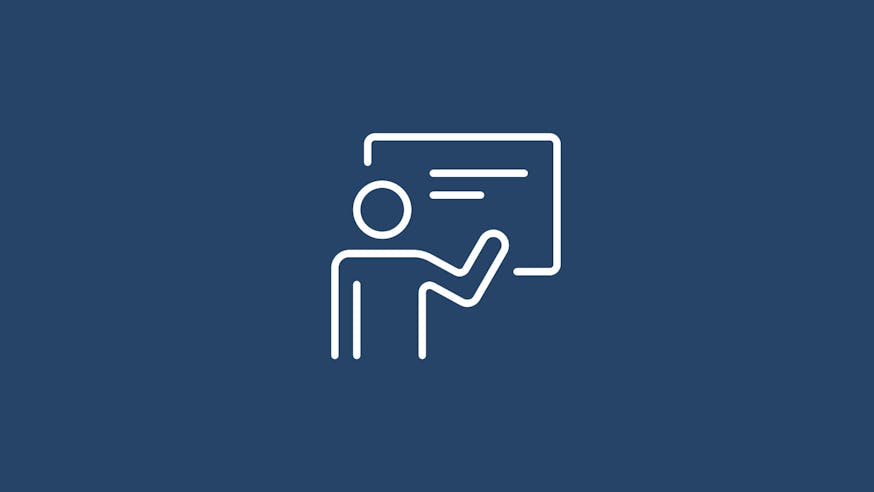Liberty Exhibit
Unit 5: Native American Soldiers and Scouts
Through his paintings, Don Troiani introduces his viewers to the roles and experiences of several Native American nations during the Revolutionary War. The purpose of this unit is to help students learn more about the ways that Native Americans participated in the war and the choices they made when deciding which side to support. Using Don Troiani’s paintings as a starting point, we can begin to envision what the conflict was like for Native Americans and how their participation contributed to the war.
Aims & Objectives
The modular activities and extensions in this unit provide opportunities for students to:
- Explore the various roles that Native Americans played in support of the armies that fought in the Revolutionary War and how their participation impacted the war.
- Evaluate the role of the Oneida, Mohawk, and Stockbridge-Mohican, in particular, and how their participation impacted the war and their communities afterwards.
- Practice historical empathy and critical thinking by evaluating the risks and rewards that accompanied the decisions made by select Native American nations during the Revolutionary War.
Materials
- Big Idea 5: Native American Soldiers and Scouts
- Virtual Museum Tour
- Painting: Battle of Kingsbridge (Stockbridge Indian Massacre) by Don Troiani, 2019 (Courtesy of Don Troiani)
- Painting: The Oneida at the Battle of Oriskany, August 6, 1777 by Don Troiani, 2005 (Courtesy of Don Troiani)
- Painting: Raiders of the Mohawk Valley by Don Troiani, 2019 (Courtesy of Don Troiani)
- Painting: Morgan’s Rifles by Don Troiani, 2015 (Courtesy of Don Troiani)
- Worksheet: Comparing Native American Nations at War
- Handout: Which Side?
Procedures
Engagement, Option 1 (10-15 minutes)
Scout Support
Teacher preparation: Review Big Idea 5: Native Americans in the Revolutionary War. Display or project the painting, Raiders of the Mohawk Valley by Don Troiani.
Engage students in a conversation around the following questions:
- What do you think is happening in the painting?
- What might be the role of the Mohawk man at the front of the painting?
Then, explain to the students that Native Americans often acted as scouts on both sides of the conflict as they generally knew the local land better than the Continental and British Armies. They were especially important in scouting ahead of raiding (a sudden attack on enemy forces).
- How do you think the Mohawk scout helped the British Army in this raid?
- How can raids be an effective war tactic?
- How important is knowledge of the local land to an army?
Engagement, Option 2 (15-20 minutes)
Roles of Native Americans
Teacher preparation: Review Big Idea 5: Native Americans in the Revolutionary War. Prepare to display or project The Oneida at the Battle of Oriskany, August 6, 1777, by Don Troiani. Navigate to the Virtual Museum Tour (Location: The Darkest Hour and then The March to Valley Forge). Prepare to display or project the image: The Army at Valley Forge.
Display or project the painting, The Oneida at the Battle of Oriskany, August 6, 1777, by Don Troiani.
Engage students in a conversation around the following questions:
- What is happening in the painting?
- What groups of people are involved in the scene? How can you tell?
- What do you notice about the fighting styles of the various groups? What do you see that makes you say that?
- How might the Oneida have helped the Continental Army in this battle?
Then, display or project the image, The Army at Valley Forge from the Virtual Museum Tour.
Using the image, have students consider the role that the Oneida played at the Valley Forge encampment. Then ask students what other roles do they think Native Americans played in the Revolutionary War?
EXTEND: Have students compare and contrast the two images.
Development, Option 1 (35-40 minutes)
Comparing Native American Nations at War
Teacher preparation: Review Big Idea 5: Native Americans in the Revolutionary War. Print out enough copies of Big Idea 5 for each student or ensure students have access to computers, tablets, or other devices with working internet connection. Print the handout: Comparing Native American Nations at War for each student or group.
Break students into three groups: the Oneida, Mohawk, and Stockbridge. Have them complete the worksheet in their group and then present their findings to the class. If time allows, have students answer the follow-up questions or assign for homework. Discuss students' answers to the follow-up questions together as a class.
EXTEND: Have students research what happened to their Native American nation after the Revolutionary War. Where are they today? Students can share this information with a PowerPoint presentation, newspaper article, documentary, photo essay or by creating a timeline showing key events in the history of their group.
Development, Option 2 (25-30 minutes)
Considering Customs
Teacher preparation: Review Big Idea 5: Native Americans in the Revolutionary War. Prepare to display or project the painting, The Oneida at the Battle of Oriskany, August 6, 1777 by Don Troiani.
Project the painting, The Oneida at the Battle of Oriskany, August 6, 1777 by Don Troiani. Give students time to examine the painting. Then ask them to find as many different pieces of clothing in the scene as they can.
Ask students if they know what the word custom means? (A traditional and widely accepted way of behaving that is specific to a particular society, time, or place.)
Then engage students in a conversation around the following questions:
- What similarities and differences do you notice between the clothing of the different groups of people represented in the painting?
- Why do you think each of these groups wore different clothes to battle?
- How are the Native Americans dressed differently from the British and Continental Soldiers?
- Why do you think the Native Americans chose these clothes instead of wearing the uniforms worn by the Continental and British soldiers? Why do you feel this was important to them?
Finally, ask students if they practice any customs from their ancestors? Have them bring in an object, food, or piece of clothing that represents a custom from their ancestry to present to the class. Ask each student why the item they chose is important to them.
Culmination
Which Side? (Historical Simulation)
Teacher preparation: Review Big Idea 5: Native Americans during the American Revolution. Print out enough copies of Big Idea 5 or ensure students have access to computers, tablets, or other devices with working internet connections.
Have students read Big Idea 5, then split them into two groups: the Oneida and the Mohawk. Tell students that they are going to debate which side of the war they should join using the information in the Big Idea and primary source handout. Give students time to read the primary sources or have them read the quotes aloud. Then have the students sit on opposite sides of the classroom to debate the following question as if they were leaders of their nation in 1776:
Should the nations of the Iroquois Confederacy support the British or the Revolutionaries in the conflict?
After the debate, engage students in conversation around the following questions:
- Which arguments did they believe to be the strongest?
- Do you think the Oneida and Mohawk Nations had the option to stay out of the war altogether? Why or why not?
Extensions & Adaptations
Considering Communities
Have students research any Native American communities near your school and how the Revolutionary War impacted them. If these communities were not directly involved in the war, what were they doing at the time and who were they interacting with? Reach out to a local Native American community elder, historian, or cultural center to bring in a guest speaker for the students to interview.
Then & Now
“Native American” is often used as a catch-all for the many different Native peoples that lived, and continue to live, in North America. Ask students to research some of the different Native American groups that deliberated over whether to support American independence. Introduce the following Native
peoples and nations to students: Shawnee, Lenape, Wyandot, Cherokee, and the nations of the Iroquois Confederacy (Mohawk, Cayuga, Onondaga, Seneca, Tuscarora, and Oneida). Split students into small groups and assign them one of the Native peoples listed above to research.
Have students research their assigned nation's role in the American Revolution and construct a “Then and Now” profile that illustrates their role in the American Revolution and contributions and conflicts in their relations with the United States today. Students can share this information with a PowerPoint presentation or by creating a timeline showing key events in the history of their group.
NOTE: There is information about these nations on the Museum's Virtual Museum Tour. Location: The Darkest Hour, Oneida Nation. Rotate around the room to the map titled The People Between.
Researching Native Americans in the Revolutionary War
Have students research the role of the following individuals in the Revolutionary War and create a presentation on their role in their nation and in support of the British or the Revolutionaries.
- Thayendanegea (Joseph Brant)
- Konwatsi'tsiaienni (Molly Brant)
- Polly Cooper
- Akiatonharónkwen (Louis Cook)
- Kaintwakon (Cornplanter)
- Agwelentongwas (Good Peter)
- Daniel Nimham
- Abraham Nimham
- Thawengarakwen (Honyery Doxtater)
- Tyonajanegen (Two Kettles Together)
- Thaonawyuthe (Chainbreaker, Governor Blacksnake)
Declaration of Independence
After the famous words “all men are created equal,” The Declaration of Independence listed 27 grievances against the British King, including one that references Native Americans: “He has excited domestic insurrections amongst us, and has endeavored to bring on the inhabitants of our frontiers, the merciless Indian Savages, whose known rule of warfare, is an undistinguished destruction of all ages, sexes and conditions.”
Engage students in a conversation around the following questions:
- Do you believe the words “all men are created equal” applied to Native Americans in 1776?
- Consider how the Native Americans viewed this grievance and being called “savages?”
Have students research to what extent Native Americans were considered “savages” in their future relations with the United States in the decades following the Revolutionary War.
Neutral Nuance
The idea of neutrality can be deceptively complex. Ask students, as individuals or small groups, to define what it means to be neutral. Have students share their definitions, then explore the topic further by discussing with students:
- Is neutrality the absence of opinion, a desire to stay out of conflict with others, or a dislike of all sides in a conflict? Or, can it be some combination of these things?
- Is neutrality more about beliefs or behavior? When might it be just one? When might it be both?
- Can neutrality ever be classified as “good” or “bad?” If so, why? If not, why not?
- What are some examples from their own lives where students have attempted to remain neutral? What motivated their decision? Did anything make it difficult to maintain their neutral stance?
Weapons of War
Have students research how Native Americans used the following weapons during the Revolutionary War: bow and arrows, clubs, hatchets, and tomahawks. How did they adapt to using weapons like flintlock muskets used by the Continental and British armies?
Painting Comparison
Have students compare and contrast The Oneida at the Battle of Oriskany, August 6, 1777 by Don Troiani with the following two paintings depicting Native Americans during the French and Indian and Revolutionary War.
- The Death of Wolfe (1770) by Benjamin West, 1770
- Thayendanegea (Joseph Brant) by George Romney, 1776
- The Death of Jane McCrea by John Vanderlyn, 1804
Discover Louis Cook Virtual Discovery Cart
Lieutenant Colonel Louis Cook (Akiatonharónkwen), also commonly known as Joseph Louis Cook, was the highest-ranking Native American officer in the Continental forces during the Revolutionary War. Have students choose one of the objects featured on the cart and research how Louis Cook would have used the object. Have them create an object card with an image of the object on one side and information about the object on the other side.
The United States' First Allies
Have students research the contributions of the Oneida Nation in various wars throughout the history of the United States in a group activity. Divide the class into the following war groups (War of 1812, the Civil War, World War I, World War II, Korean War, Vietnam War, Gulf War) and give them time to research and present their findings to the rest of the class.
Learn More

Liberty Exhibit Teacher Resources

Liberty Exhibit Big Ideas

